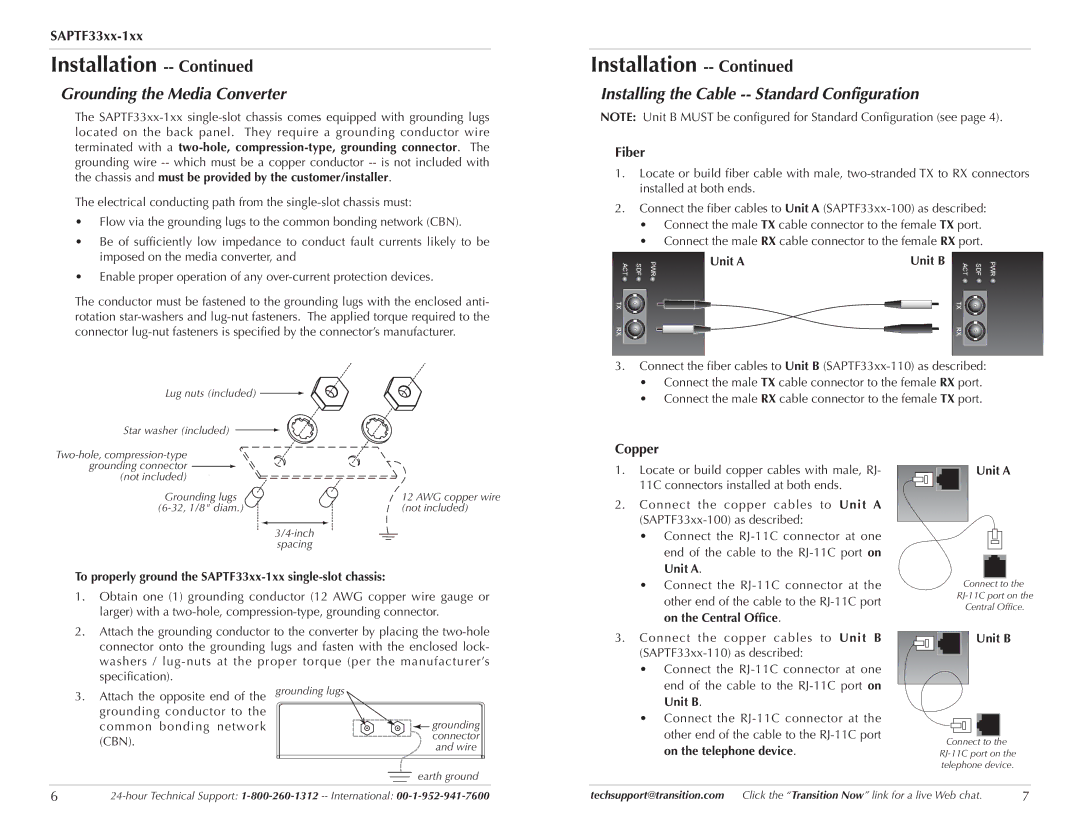SAPTF33xx-110, SAPTF33xx-100 specifications
Transition Networks has made significant strides in the field of network communications with their SAPTF33xx-100 and SAPTF33xx-110 series of media converters. These devices are designed to facilitate a seamless transition between different types of network connections, specifically converting between twisted pair Ethernet and fiber optic cabling. This capability is crucial for organizations seeking to extend the reach of their networks while maintaining high-speed communication.One of the standout features of the SAPTF33xx series is its support for both 10/100/1000 Mbps speeds, making it highly versatile for various networking needs. The devices can operate in both half-duplex and full-duplex modes, providing flexibility in how networks are managed. This adaptability allows users to choose the configuration best suited to their specific operational environment.
The SAPTF33xx-100 model is tailored for applications that require fast and reliable data transfer over shorter distances, utilizing twisted pair cabling. In contrast, the SAPTF33xx-110 extends this capability by integrating fiber optic connections, which are essential for long-distance data transmission. This feature is particularly beneficial in environments where electromagnetic interference (EMI) is a concern, as fiber optic cables are impervious to such disturbances.
Another impressive characteristic of these media converters is their plug-and-play functionality. This feature simplifies setup and operation, requiring minimal configuration, which is appealing for organizations without extensive IT support. Additionally, both devices are equipped with LED indicators that provide real-time diagnostics, enabling users to monitor network status and troubleshoot issues effectively.
The SAPTF33xx series also boasts robust build quality, with various mounting options to fit different rack sizes and environments. They are designed for long-term durability and can withstand the rigors of different operational settings, whether in data centers or remote installations.
Moreover, these devices come with enhanced features such as auto-negotiation, which simplifies network configuration by automatically selecting the optimal transmission speed and duplex mode. This automaticity ensures that the devices maintain optimal performance without requiring manual intervention from network administrators.
In summary, Transition Networks’ SAPTF33xx-100 and SAPTF33xx-110 media converters represent a reliable solution for organizations looking to enhance their network infrastructure. With their high-speed capabilities, seamless integration of copper and fiber connections, ease of use, and robust design, these devices stand out as impactful tools for improving network efficiency and reliability.

